When it comes to selecting survival gear, one of the most important pieces of gear in your preparedness arsenal is going to be your knife. A good survival knife is worth its weight in gold and finding the right one shouldn’t be a decision that’s taken lightly.
Unfortunately, the internet has made it even harder on preppers and preparedness minded people to find the right information. In fact, a majority of the reviews or web pages you will find promoting the so-called best survival knives are nothing more than cleverly crafted sales pages written by people who have zero experience with survival, and even less experience with the knives they are talking about.
With that in mind, we wanted to share our real-world experience with our readers and take a deep-dive analysis into what you should be looking for when selecting a knife. We’re also going to look at the top survival knives that are currently on the market. Every knife in this article is something we have used, and many of them are knives that we personally carry when we go out into the field.
What is a Survival Knife?
It may sound like a weird question, but if you’ve spent more than five minutes trying to find one you know, it’s a question that must be addressed. A survival knife at it’s most basic is a tool that will help you survive in your given threat scenario.
In our opinion, that almost always means a solid, full tang, fixed blade knife. In almost every case we can think of, nothing beats a well-made, fixed blade survival knife.
Keep in mind, a hunting knife may be a good survival tool during certain circumstances, but in an urban setting, it probably isn’t going to be the best choice. For that reason, you need to take into account the most likely situations you will be using your knife in.
What should you stay away from?
Probably the best place to start is a list of things to stay away from. First, this isn’t a movie. If someone is trying to sell you a blade that looks like it came straight out of a Rambo movie, RUN! Don’t fall for the hollow handle blades that are often marketed as survival tools. It may seem like a good idea to be able to stash extra survival gear inside your knife, but in reality, these knives never hold up in the real world.
The second thing to stay away from is folding knives or multi-tools. Yes, these both have their place, but neither is really a good option when it comes to a dedicated survival blade.
What you should look for in a good Survival Knife
1. Fixed Bladed
While I do carry a pocket knife on a daily basis, there is no substitute for a good fixed-blade knife. A fixed-blade is going to be far more durable and has fewer breaking points when compared to a pocket folder. In a survival situation, the last thing you want to worry about is a broken knife.
You want to look for a fixed-blade knife that will allow you to use it in a variety of situations. A fixed-blade allows you to cut, slice, dig, split wood, and pry things without having to think about breaking points or hinges.
2. Full Tang
The tang is the part of the knife that you usually don’t see, but it’s also one of the most important considerations when choosing a knife. A full-tang simply means that the blade’s steel extends all the way down the handle of the blade, at pretty much the same width and thickness. It provides extra strength to the entire knife.
3. Blade Material
I’m not going to talk too much about materials, because, for the most part, most good knives are either going to be either carbon or stainless steel. There are a ton of different variations in these two categories, but in general, you want to look for something that has good edge retention, rust/corrosion resistance, and is easy to re-sharpen.
Some example of popular blade steel properties:
- 420HC is stainless steel that provides good corrosion resistance, with easy sharping and medium edge retention.
- 154CM is custom steel with a much higher carbon content, which gives the blade a higher hardness rating and higher edge retention.
- S30V is a high vanadium stainless steel with one of the best edge retentions out there, but it is more difficult to sharpen.
4. Handle Materials
From bone to composite materials, there are hundreds of different handle materials to choose from. Here are some we like:
- Rubber, Micarta and textured handles provide a better grip in wet conditions.
- Wood and metal handles are often used for strength and durability.
- Composite handles provide fit, grip and durability.
Our Review of the Top Fixed Blade Survival Knives:
USMC KA-BAR
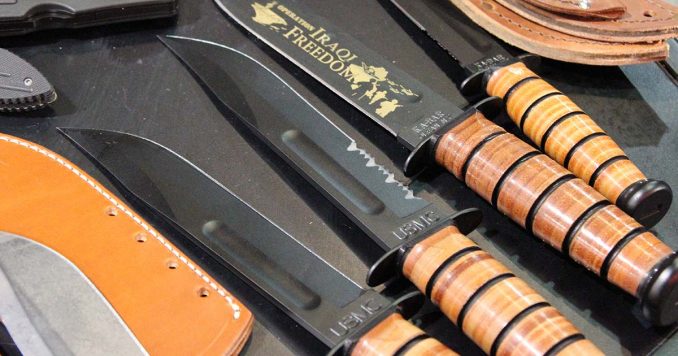
The USMC KA-BAR is a legendary knife that has been in use by the United States Marine Corps since World War II. Originally known as the 1219C2 combat knife, The USMC Mark 2 Combat knife is probably one of the best-known survival knives on the market and has become an iconic symbol of the USMC.
Although it’s primarily thought of as a combat knife, it was designed to be a multipurpose utility knife that proved especially valuable in jungle environments. To this day it’s still the go-to knife for most Marines.
- Overall Length: 11.875″
- Blade Length 7″
- Steel: 1095 Cro-Van
- Handle: Leather
- Grind: Flat
SOG SEAL Pup Elite

The SOG SEAL Pup Elite is another knife made famous by its reputation among the military. Designed to be used by active duty Navy SEALS, the SEAL Pup Elite has earned its place at the top of the list because it has proven it can hold up during even the toughest of conditions.
It’s one of my favorite knives and something I’ve been carrying for over ten years now! You can read my original review of the knife from 2008.
- Overall Length: 9.5″
- Blade Length 4.58″
- Steel: AUS-8
- Handle: Glass-Reinforced Nylon
Tom Brown Tracker Knife
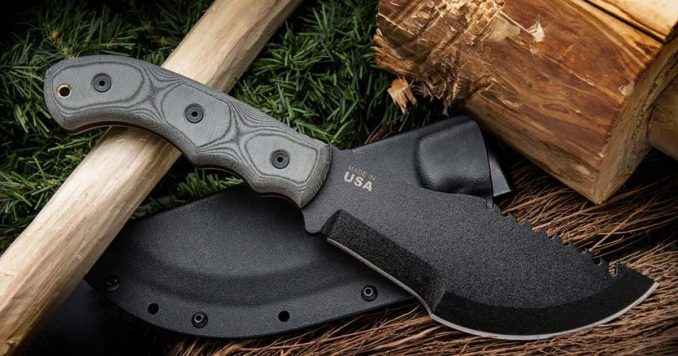
The Tom Brown Tracker Knife is one of the more expensive knives in the group, but it’s definitely one that deserves its place on the list because of its durability and usefulness in a wilderness setting.
As you can see from the picture above, the design of this blade sets it apart from most of the other knives on the list. It’s designed to be used in the wilderness, and has three distinct blade sections designed for chopping, carving, and sawing. The unique blade and the long handle make it great for batoning, gutting fish and game, and just about any bushcraft application you can think of.
- Overall Length: 11.88″
- Blade Length 6.38″
- Steel: 1095 RC 56-58
- Handle: Black Linen Micarta
The Morakniv Companion
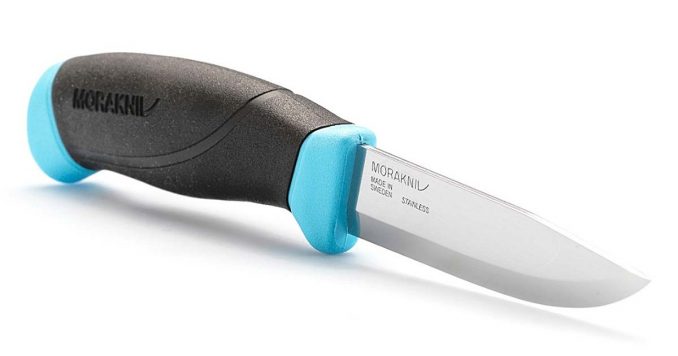
When it comes to survival knives, you really do get what you pay for. That being said, if you’re on a budget and looking for something that’s not going to break the bank, The Morakniv Companion is a knife that you can’t afford to pass up. Ranging anywhere from $15 – $30, the Morakniv Companion is one of the only knives at that price point that came anywhere near making the list.
They’re sturdy, durable, and at under $30 you’re not going to find a better knife for that price point.
- Overall Length: 8.6″
- Blade Length 4.1″
- Steel: Sandvik 12C27 stainless
- Handle: Patterned, high-friction grip TPE Rubber
The Ka-Bar Becker BK2 Campanion
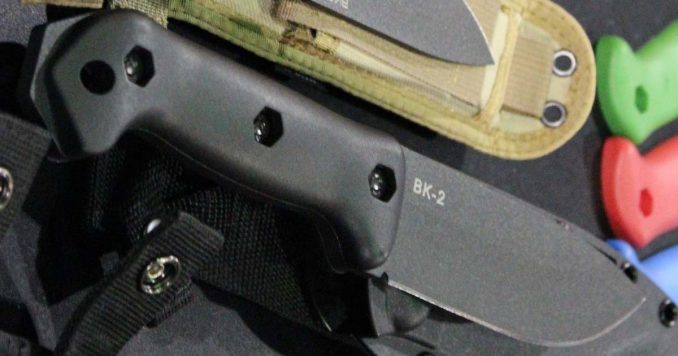
The Ka-Bar Becker BK2 Campanion is a fixed-blade knife designed by outdoorsman Ethan Becker. The knife is wide, thick, and can really take a beating. You can use this thing all day as a chopper and never have to worry about it breaking; this knife is a tank.
- Overall Length: 10.5″
- Blade Length 5.2″
- Steel: 1095 Cro-Van
- Handle: Ultramid
The ESEE-6 Survival Knife
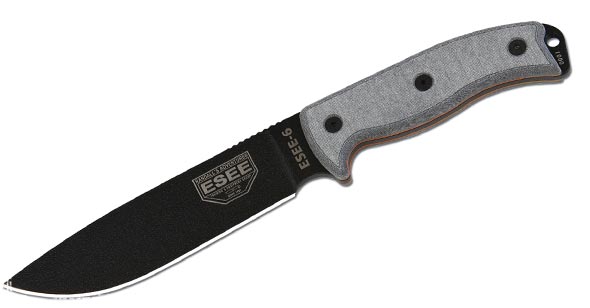

The ESEE 6 Fixed Blade Knife is an excellent all around knife that can be used in both urban and wilderness settings. It’s made with 1095 carbon steel and comes with removable Micarta handles. The knife can be utilized for everything from batoning, chopping and skinning game in the wild, to traditional utility or self-defense purposes in an urban setting.
- Overall Length: 11.75″
- Blade Length: 6.50″
- Steel: 1095 Carbon, 55-57 Rc
- Handles: Linen Micarta
- Made in the U.S.A.
The 162 Bushcraft Knife

The 162 Bushcraft Knife is Benchmade’s first foray into the Bushcraft world. It’s a fixed blade knife that’s a real workhorse. You can really beat the heck out of this knife without worrying about damaging it. Read our full review here.
- Designed for Wilderness Survival Applications
- Made with American CPM-S30V Steel
- Precision drop-point construction for strength.
- G10 Handle designed for wet weather to be impervious to moisture.
Ka-BAR Becker Tac Tool
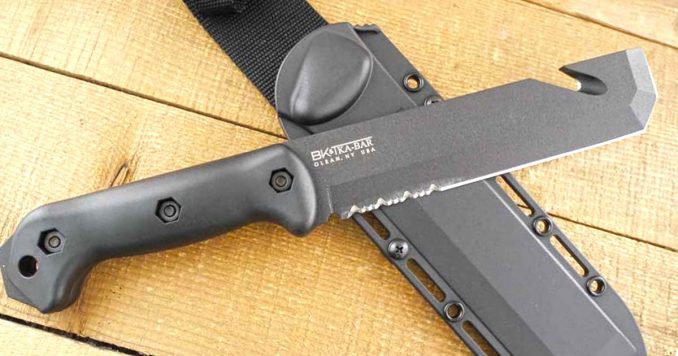
The Ka-BAR Becker Tac Tool is a rapid entry knife designed for Urban Survival! Ethan Becker of BK&T and John Benner of TDI teamed up to make this urban Tac Tool that is popular with rescue workers, special response teams, and military operators.
- The knife is designed to smash, bash, pry, chisel, hammer and cut.
- It is great for lifting hinge pins and hammering out glass.
- Most relevant for urban survival, something most wilderness style knives would fail at, is its ability to be used as a pry bar. The knife features a blunt chisel pry-bar tip for prying open doors and windows.
TOPS Knives Fieldcraft B.O.B.

If you are looking for a bushcraft knife to add to your supplies, then look no further than the TOPS Knives Fieldcraft B.O.B.
The Fieldcraft was designed by The Brothers of Bushcraft, a coalition of men across North America focusing on sharing wilderness living skills of all categories. It’s made in the U.S.A. and can handle just about any wilderness task that you throw at it.
- Overall Length: 10″
- Blade Length: 4 1/2″
- Blade Material: 1095 High Carbon RC 56-58
- Handle: Micarta



As someone who has worked in knife shops, made knives and done so much research its disgusting, I have to say that your list has too many Ka-Bar knives, and by too many, I mean any at all. I have had cops come in to where I worked and tell me that their old trusty Ka-Bar Marine corp knife had broken in half when they were trying to use it as a pry bar; which is a necessary part of their job. Ka-Bar is no longer a quality product, and have been left in the dust by ESEE, Ontario, Bark River, Cold Steel and a dozen other companies. They are nostalgic pieces more than functional.
Also the Tom Brown Tracker, while definitely a cool looking blade, is not a great option for any kind of field craft. It does not allow you to baton at all, the belly of the blade is nearly impossible to sharpen with a field sharpener.
Maybe even a good Spartan…from Spartan Blades!!!
You cannot complain about a rat tail tang knife like the Kabar USMC knife breaking when used as a pry bar. It was designed as a cheap, mass produced, and effective battle field knife, not a pry bar. If you want a knife for a pry bay, get the BK-2 or even a BK-6, which is the same length as the USMC.
Yes, ESEE (made by Rowen) has excellent manufacturing. Kabar quality is slightly less, but still good. Ontario quality is lower. I heard several people complain about Cold Steel knives not being as tough as they were in the past. Bark River is also excellent quality but at two or three times the price.
ESEE handle designs are rudimentary and blocky. Kabar’s Becker handle knives are much more ergonomic.
Interesting lineup. I see the subject of “affordability,” was taken into consideration.
I own Ontario knives, Bench Made, Esse and was gifted a Randall #1 fighter by an uncle
upon my Graduating High School.
There are tons of options when it comes to knives and it’s a very personal thing to have to survive with one. I carried a TFR Fighting Blade in Afghanistan becuase it was the toughest knife in the country. 1/2″ thick steel 4″ blade balanced for throwing. Can be lashed to a pole as a spear. Ive chopped wood with it. Can sharpen up very nicely. For those who want next level performance from thier knife. Oh, also, it was designed as a secondary weapon in a fight. Made to break through bone.
My hollow handle model 18 hasn’t let me down yet and although I haven’t carried them in the field I expect my Chris Reeve hollow handle knives would hold up ok.